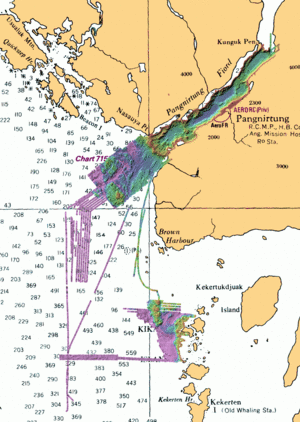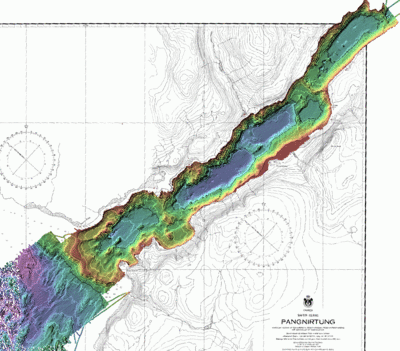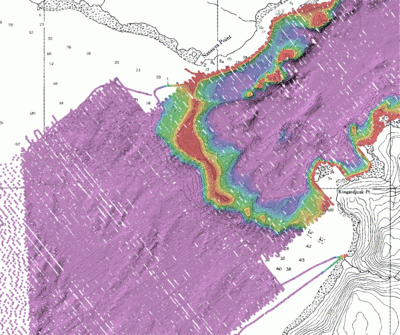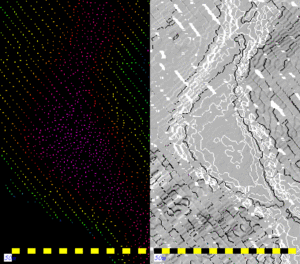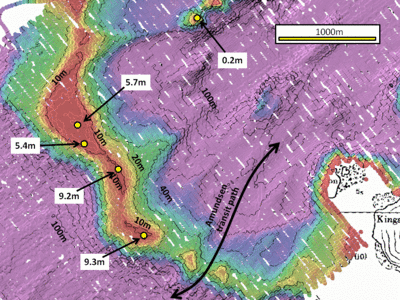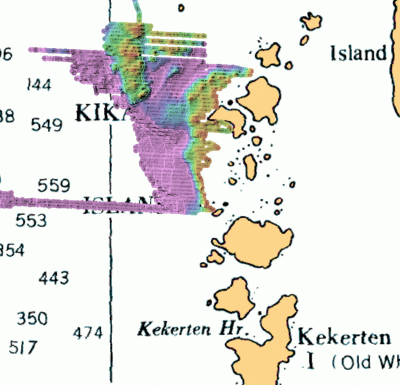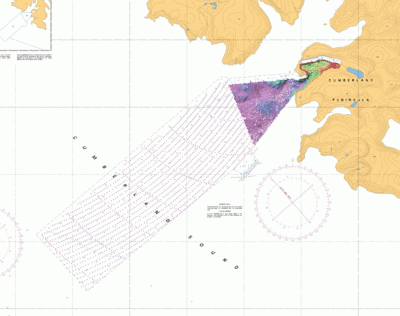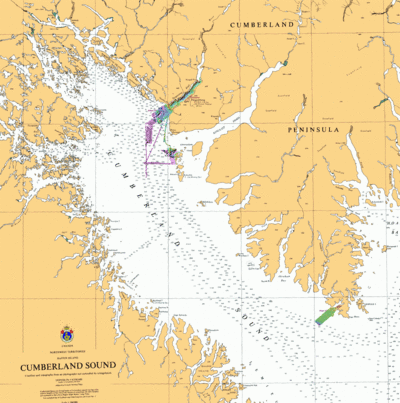
Ian converted the ntx files from CHS into usable values and I've now edited out the non-sounding fluff.
At this link : chs_cumberland_soundings.tar.gz
(do not! pass this data on to anyone except other UNB as per DULA)
is the data in the standard OMG ascii "lat lon depth" format (decimal lat and long, negative depths are underwater - includes intertidal surveys). You can grid these directly :
> weigh_grid -ascii.
The Pang data is supposed to already be converted to NAD83. I can confirm that the Pangnirtung data exactly lines up with the Amundsen EM300 2007 data (to the limit of the single beam line spacing). The Cape Mercy data was NAD27 which we've tried to shift, but there may be an issue.
The only charts of the area are CHS "unofficial BSB" scans of questionable datum charts. None of the ones that cover the area are in the official Digital Ocean Release (i.e. approved for release for ENCs so don't trust them other than relative), but we have those unofficial ones. I've converted them using the NOAA BSB reprojector.
- 7051 - Cumberland Sound - is way off...
- 7150 - Pangnirtung Fjord - is actually almost dead on.
- 7136 - Cape Mercy - does not agree with Ian's NAD27-NAD83 conversion. Don't know which to trust.
